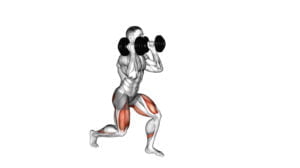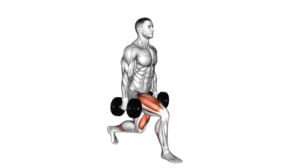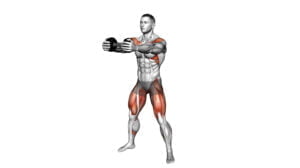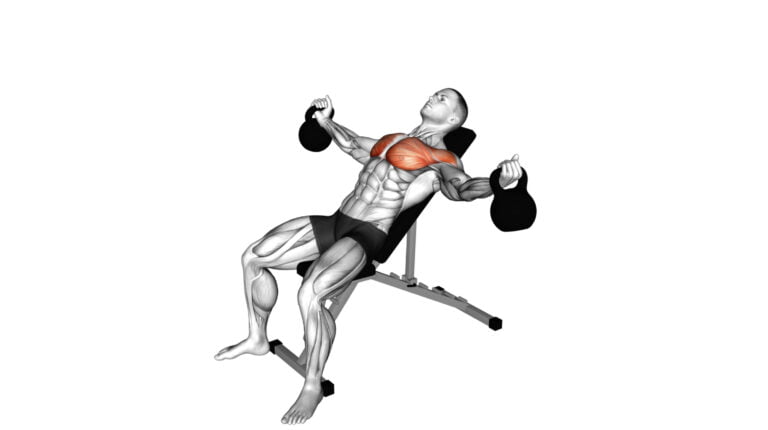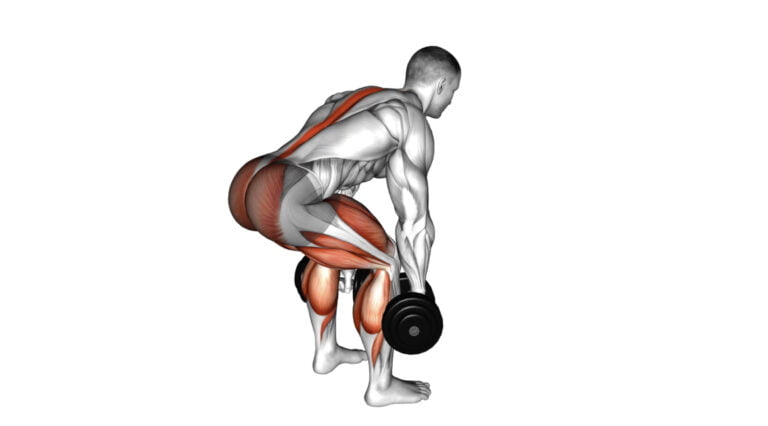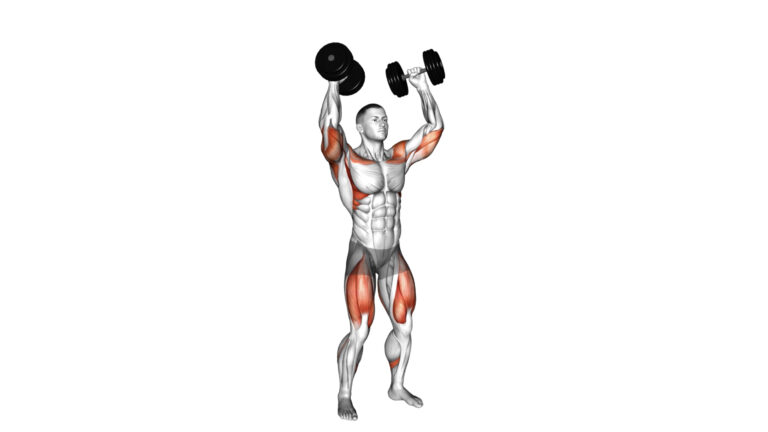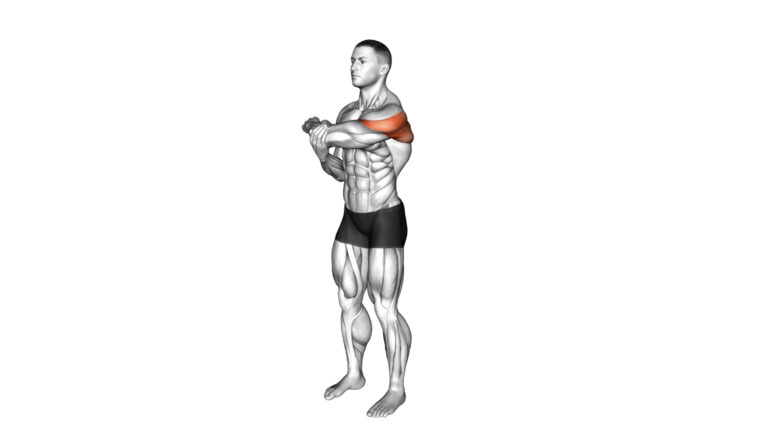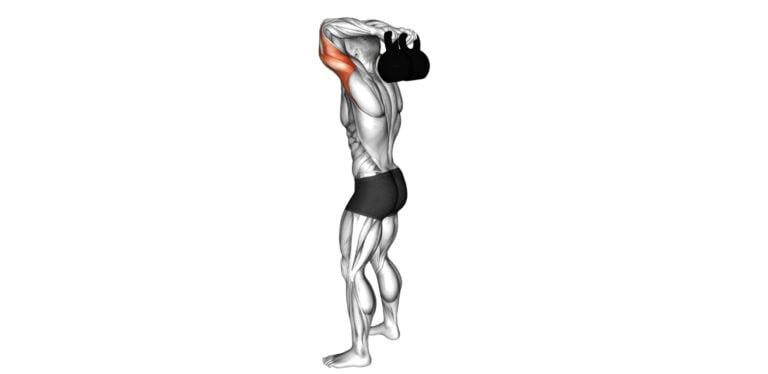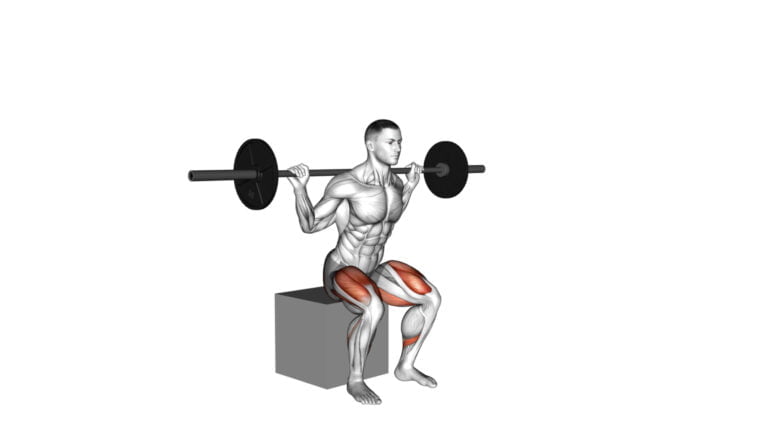The Top 10 Free Weight Quad Exercises To Sculpt Your Legs
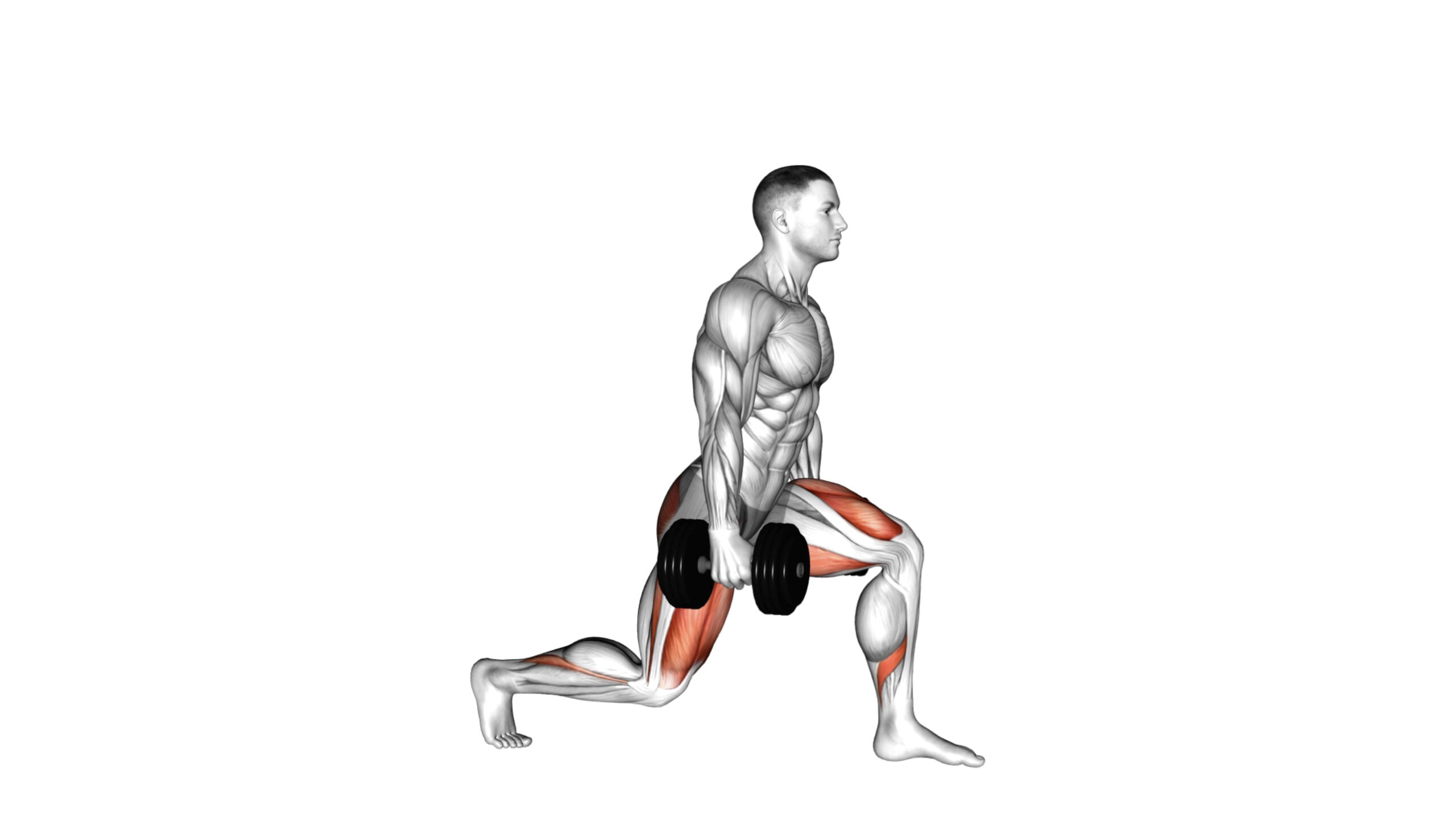
Leg day: a term that can either spark motivation or bring even the most dedicated fitness enthusiasts to their knees. Strong, sculpted legs are a badge of honor and hard work in any fitness journey, yet achieving them is no simple feat.
With over a decade of experience as a certified strength and conditioning specialist (CSCS), I’ve guided countless clients through the maze of exercises aimed at enhancing leg strength and aesthetics, with particular emphasis on free weight quad exercises.
Engaging your quadriceps—the powerful muscles on the front of your thigh—is essential not just for sports performance but for daily activities too. A surprising fact to many is that these muscles play a major role in knee stabilization; consequently, neglecting them may lead to injury down the line.
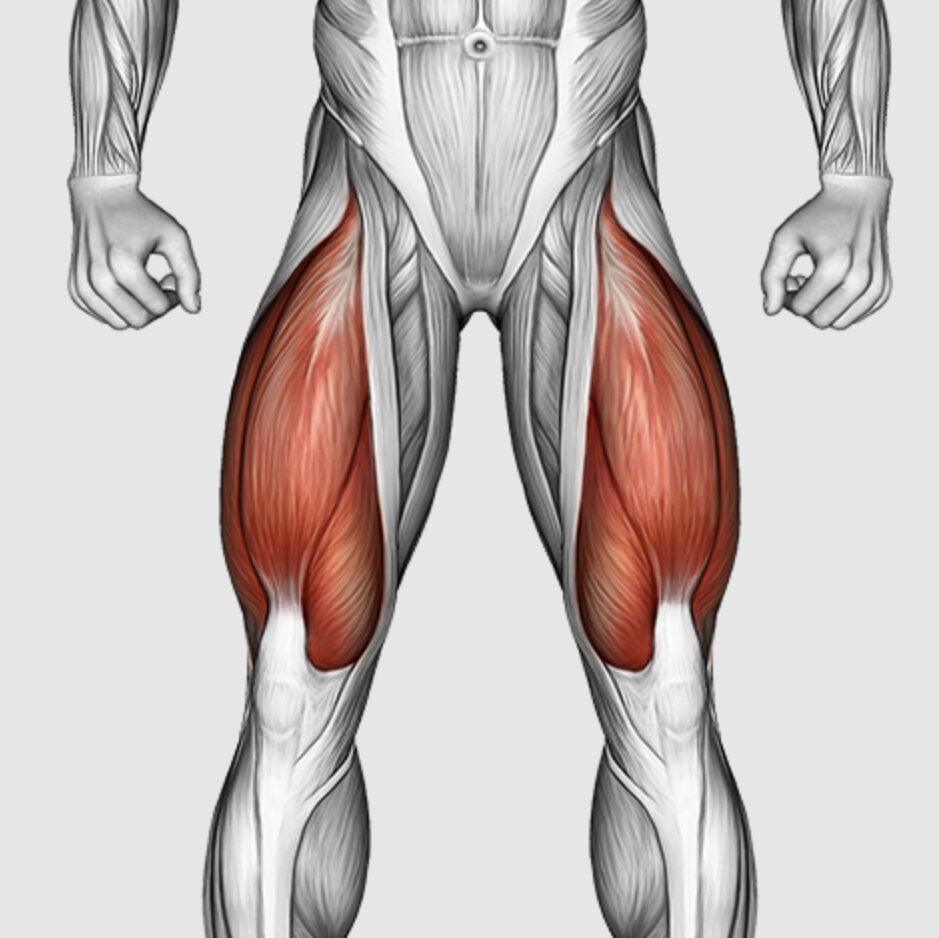
This article is your road map to sturdy quads capable of powering you up stairs, into sprinter speeds, or through grueling hikes effortlessly. Ready for transformation? Let’s dive into the world of free weight quad sculpting!
Key Takeaways
- Free weight quad exercises like dumbbell Cossack squats, wall sits, and barbell lunges build strong, aesthetic legs by targeting multiple muscle groups at once.
- Strengthening your quads with these exercises can improve athletic performance, knee health, and overall quality of life by enhancing stability and reducing injury risk.
- Training with free weights challenges balance and stabilization, which engages additional muscles for a more effective workout.
- Beginners to advanced fitness enthusiasts can benefit from incorporating these top quad – focused movements into their routine for balanced lower body development.
- Free weight exercises for the quads ensure efficient use of time in workouts by engaging various muscles simultaneously for comprehensive strength building.
Importance of Training Your Quads
Training your quads is crucial for achieving aesthetic leg development, increased strength, and overall improved quality of life. It also plays a significant role in enhancing upper body strength.
Improved aesthetics
Strong quads can transform your legs’ appearance, giving you a lean, toned look that’s not just for athletes. Regular quad exercises like goblet squats and Bulgarian split squats sculpt the front of your thighs, adding definition to the vastus lateralis and rectus femoris muscles.
This muscular enhancement around your knee cap and upper thigh doesn’t only look great but also supports better overall leg aesthetics.
Working on these key muscle groups through targeted movements such as hack squats and pistol squats will highlight the sought-after teardrop muscle or vastus medialis. Not only does this contribute to a balanced physique, but it also prepares you for the next benefit: increased strength – setting the stage for even more powerful workouts and daily activities.
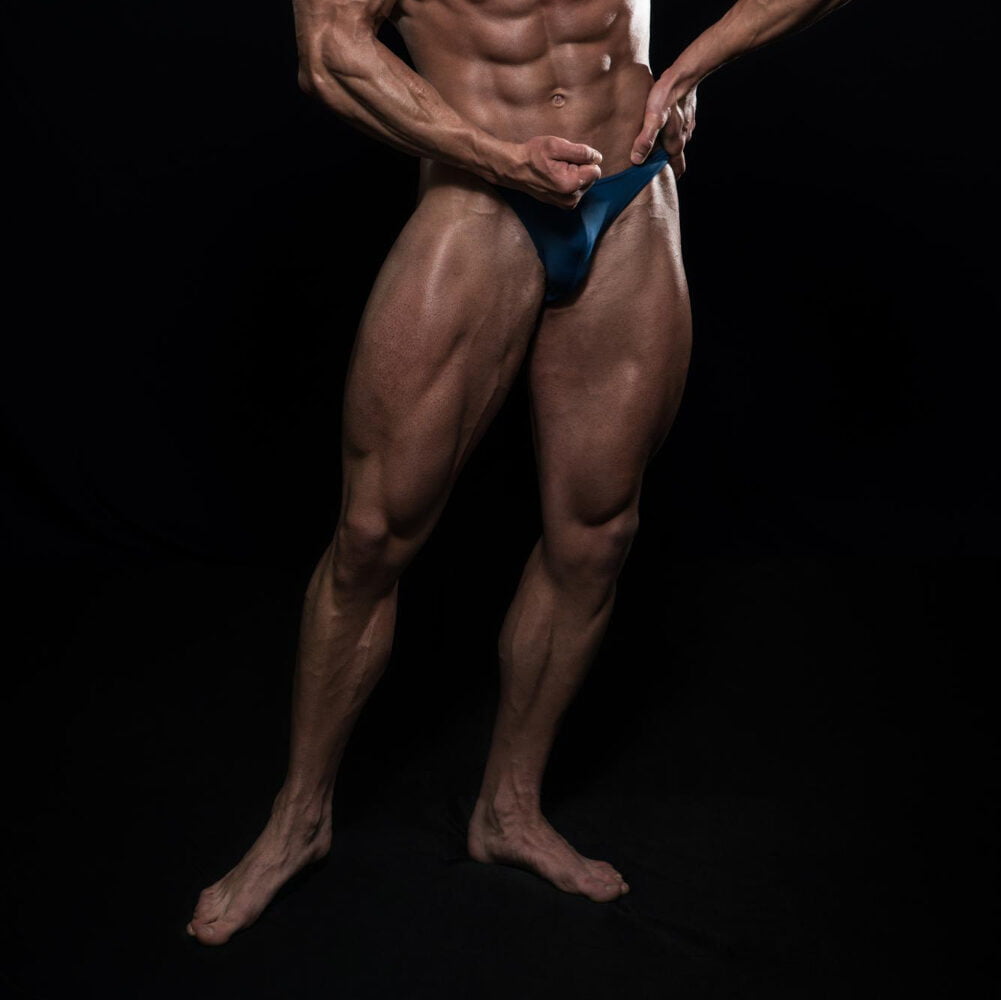
Increased strength
Building strength in your quadriceps isn’t just about looking good; it’s a foundational aspect of enhancing overall muscular endurance and power. Targeting these muscles through free weight quad exercises, such as deep squats or front squats with barbells, increases the force you can exert across various activities.
Whether pushing up from a squat position or pressing up during a bench press, stronger quads contribute to more powerful movements. This also translates into better stability for the knee joint and support for the lower back during heavyweight-lifting tasks.
Free weights challenge your balance and stabilization simultaneously, engaging not only the quadricpes but also synergistic muscle groups like glutes and hamstrings. As your body adapts to lifting heavier weights through exercises like Bulgarian squats or conventional deadlifts, it responds by building denser muscle fibers in the quadriceps muscles—this equates to palpable gains in leg strength over time.
Now let’s turn our attention toward how this increased strength impacts our quality of life daily.
Improved quality of life
Strong quads contribute to a stable and balanced body, leading to better mobility and fewer injuries. This is especially important as we get older since maintaining muscle strength supports overall health and independence.
Regular quad exercises with free weights can enhance daily activities like climbing stairs or lifting groceries, making them feel easier and less tiring.
Incorporating these workouts into your routine may also improve posture, which often suffers from sedentary jobs and lifestyles. Better posture leads to reduced back pain and other musculoskeletal discomforts.
By strengthening the quadriceps femoris through targeted training, individuals enjoy an uplift in quality of life that goes beyond physical fitness—it fosters confidence that permeates every task they undertake.
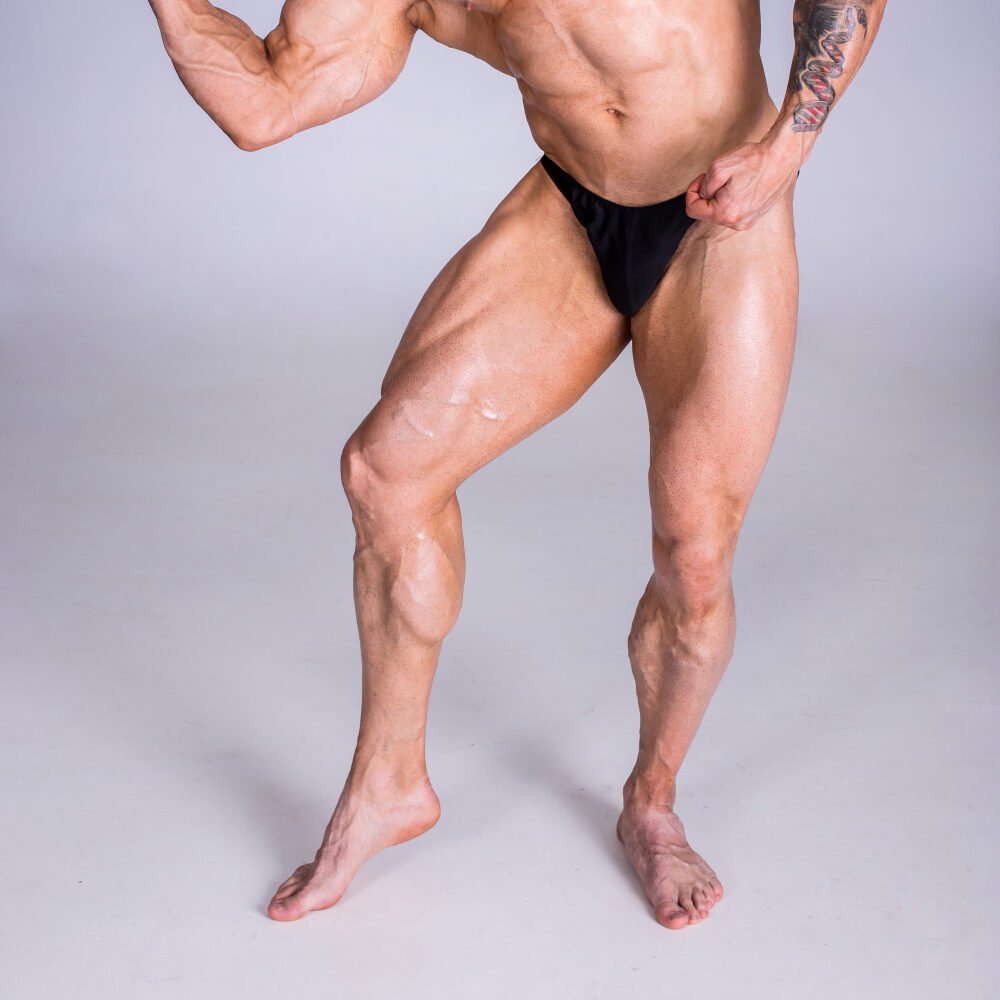
Enhanced upper body strength
Strengthening your quads with free weight exercises doesn’t just benefit your lower body. The engagement of the quadriceps, hamstrings, and glutes in these movements also requires a strong upper body for stability and support.
As you perform exercises like dumbbell goblet wall sits or barbell front rack lunges, your shoulders, back, chest, and arms are activated to maintain proper form and control the weight.
This comprehensive engagement can lead to improved upper body strength over time, contributing to better overall muscular balance and functional fitness.
Performing quad-focused free weight exercises not only targets your lower body but also engages your upper body muscles for support and stability. Movements like dumbbell goblet wall sits or barbell front rack lunges require shoulder, back, chest, and arm activation for maintaining correct posture and controlling weights.
Benefits of Free Weight Quad Exercises
By incorporating free weight quad exercises into your workout routine, you can experience improved athletic performance, defined and firm legs, healthier knees, and better overall quality of life.
If you want to learn more about the benefits these exercises offer, keep reading!
Improved athletic performance
Enhance your athletic performance with targeted quad exercises using free weights. Strengthening the quadriceps not only improves lower body power but also boosts overall agility and speed, crucial for athletes across various sports disciplines.
Incorporating these free weight quad exercises into your training regimen can significantly elevate your endurance levels and explosive strength during high-intensity activities such as sprinting, jumping, and quick directional changes on the field or court.
Engaging in compound movements like squats and lunges with free weights effectively activates multiple muscle groups simultaneously, fostering better coordination between the upper and lower body.

Defined and firm legs
To achieve defined and firm legs, focus on free weight quad exercises that target the quadricep muscles. Engaging in challenging workouts like dumbbell cossack squats, barbell front rack lunges, and dumbbell bench squats will help to sculpt and strengthen your lower body.
Incorporating these exercises into your routine will enhance muscle definition and build firmness in your legs.
By incorporating these effective quad exercises with free weights into your workout routine, you can work towards achieving well-defined and firm legs while improving overall lower body strength.
Healthier knees
To ensure longevity in training and maintain the results of defined and firm legs, it’s crucial to prioritize the health of your knees. Incorporating free weight quad exercises not only helps sculpt your legs but also supports healthier knee joints.
Strengthening the quadriceps through exercises like dumbbell Cossack squats, barbell front rack lunges, and dumbbell goblet Bulgarian split squats can help stabilize the knee joint by building surrounding muscle strength.
Engaging these muscles assists in reducing strain on the knees during movements and everyday activities, ultimately contributing to improved knee health.
Better quality of life
Training your quads with free weight exercises can lead to a better quality of life. By strengthening these muscles, you can improve your overall stability and balance, making daily activities like walking up stairs or carrying groceries easier and safer.
Additionally, strong quad muscles contribute to better posture and lower the risk of injury in everyday movements, allowing you to maintain an active lifestyle for years to come.
Engaging in free weight quad exercises not only enhances physical health but also fosters mental wellness by boosting self-confidence through improved physical strength and appearance.
Efficient use of time
Let’s now explore how incorporating free weight quad exercises can be an efficient use of time. By engaging multiple muscle groups simultaneously, such as the quadriceps, hamstrings, and glutes, these compound exercises allow you to target several areas in one movement.
This approach maximizes the effectiveness of your workout by optimizing the number of muscles engaged and reducing the need for isolated exercises.
Efficiency is further enhanced through increased calorie burning during compound movements. These high-intensity workouts maximize energy expenditure for a more productive session in less time.
10 Best Quad Exercises with Free Weights
Get ready to sculpt your legs with these effective free weight quad exercises. From dumbbell cossack squats to barbell front rack lunges, we’ve got you covered with the best exercises for building strong and defined quads.
Read on to discover how these exercises can transform your leg workouts.
1. Dumbbell Cossack Squats
Engage your quads, glutes, and adductors with dumbbell Cossack squats. Stand tall with a dumbbell in each hand, feet wider than shoulder-width apart. Shift your weight to one side as you squat down on that leg while the other leg remains straight.
Push through your heel to return to the starting position before repeating on the other side. This exercise enhances lower body strength and flexibility, making it an excellent addition to any leg workout routine!
2. Dumbbell Bench Squat
The dumbbell bench squat is a highly effective exercise for targeting the quadriceps, hamstrings, and glutes. To perform this exercise, start by holding a dumbbell in each hand and standing in front of a bench or chair.
Keep your feet shoulder-width apart and your chest up as you slowly lower yourself into a squatting position until your glutes lightly touch the bench. Push through your heels to return to the starting position, ensuring that you engage your leg muscles throughout the movement.
This exercise not only strengthens the lower body but also improves stability and balance. It’s an excellent option for individuals looking to build muscle mass in their legs while also enhancing overall lower body strength.
3. Dumbbell Change Lateral Raise Curtsey Lunge
Perform the dumbbell change lateral raise curtsey lunge by holding a dumbbell in each hand, palms facing inward. Begin with your feet shoulder-width apart and take a step back and diagonally to perform the curtsey lunge.
As you lower into the lunge, lift the dumbbells out to the sides until they reach shoulder height. Then return to standing position as you bring your arms back down.
This exercise targets multiple muscle groups including the quadriceps, hamstrings, glutes, and shoulders. It also improves balance and stability while engaging core muscles for support.
4. Dumbbell Goblet Bulgarian Split Squat
Transitioning from the dynamic movement of the Dumbbell Change Lateral Raise Curtsey Lunge to the stability required for a Bulgarian split squat, this exercise demands full-body engagement.
Holding a dumbbell in front of your chest, maintain balance as you position one foot behind you on an elevated surface while lowering into a deep lunge with your other leg. Press through the heel and return to standing, focusing on targeting your quads, glutes, and hamstrings.
Executing this exercise with precision not only strengthens these muscles but also enhances stability in the hips and knees. Asymmetrical loading forces core engagement for balance and surpasses traditional squats by testing each leg independently.
5. Dumbbell Goblet Wall Sit
Transitioning from the Dumbbell Goblet Bulgarian Split Squat to the Dumbbell Goblet Wall Sit, this exercise is an incredible way to engage your quads and build lower body strength.
With a dumbbell held close to your chest, lean against a wall with your feet positioned hip-width apart and slide down until your thighs are parallel to the ground. Maintain this position, engaging your core and quadriceps as you hold for an allotted time.
The Dumbbell Goblet Wall Sit specifically targets the quadriceps while also strengthening the glutes and calves. It’s an effective isometric exercise that challenges endurance and stability in the lower body.
6. Dumbbell Low Split Squat
The dumbbell low split squat targets the quadriceps, glutes, and hamstrings while also engaging the core for stability. Start by holding a dumbbell in each hand at your sides. Take a large step back with one foot, lowering your body until both knees are bent at 90-degree angles.
Push through the front heel to return to the starting position.
Engaging multiple muscle groups simultaneously makes this exercise efficient and effective for building lower body strength and stability. The added resistance of the dumbbells increases intensity, promoting muscle growth and improving balance.
Incorporate this move into your leg workout routine for a well-rounded lower body training session that will contribute to improved strength and aesthetics.
7. Barbell Front Rack Lunge
The barbell front rack lunge targets the quadriceps, hamstrings, and glutes while also engaging the core for stability. To perform this exercise, stand with your feet hip-width apart and hold a barbell across your shoulders at shoulder height.
Step forward into a lunge position, ensuring both knees are bent at 90-degree angles. Push back to the starting position using the strength of your front leg. This movement is excellent for building lower body strength and stability.
By performing the barbell front rack lunge, you can develop muscle balance in each leg while challenging your coordination and mobility. Incorporating this exercise into your workout routine can help build functional strength essential for daily activities and sports performance.
8. Barbell High Bar Squat
Transitioning from the Barbell Front Rack Lunge, the Barbell High Bar Squat is an effective quad exercise that also targets your glutes and hamstrings. To perform this movement, position a barbell on your upper traps and shoulders, ensuring a tight grip.
Stand with your feet shoulder-width apart and lower yourself down by bending at the knees until your thighs are parallel to the ground. Keep your back straight throughout the movement and press up through your heels to return to standing position.
Engage your core for stability during the descent and ascent of the squat. Emphasize proper form over heavy weights when starting out to prevent injuries. This compound exercise is beneficial for building overall lower body strength while targeting the quads specifically.
9. Barbell Lateral Lunge
The barbell lateral lunge is a powerful exercise that targets the quadriceps, hamstrings, and glutes. To perform this exercise, stand with your feet shoulder-width apart and hold a barbell across your shoulders.
Take a large step to the side with one leg and lower your body by bending at the hips and knee of your leading leg. Push through your heel to return to the starting position. This movement engages multiple muscle groups, making it an efficient way to build strength in the lower body.
By incorporating barbell lateral lunges into your workout routine, you can enhance overall muscular endurance while also improving balance and coordination. It’s an excellent addition for those looking to develop functional strength necessary for various athletic activities or daily movements.
10. Barbell Olympic Squat
Transitioning from the Barbell Lateral Lunge to the Barbell Olympic Squat, this exercise challenges your quads, glutes, and core. To perform a Barbell Olympic Squat, stand with feet shoulder-width apart and position the bar across your upper back.
Lower into a squat by bending at the knees and hips until thighs are parallel to the ground. Push through your heels to return to standing position.
For added intensity in targeting your quads, keep your chest up and maintain an upright posture throughout the movement. Engage core muscles for stability and control as you execute each repetition of this powerful leg exercise.
Sample Quad Workout with Free Weights
For a beginner-friendly quad workout with free weights, try starting with 3 sets of dumbbell bench squats, followed by 3 sets of dumbbell low split squats. For an advanced workout, incorporate barbell front rack lunges and barbell high bar squats for maximum quad engagement.
Remember to focus on proper form and controlled movements for the best results.
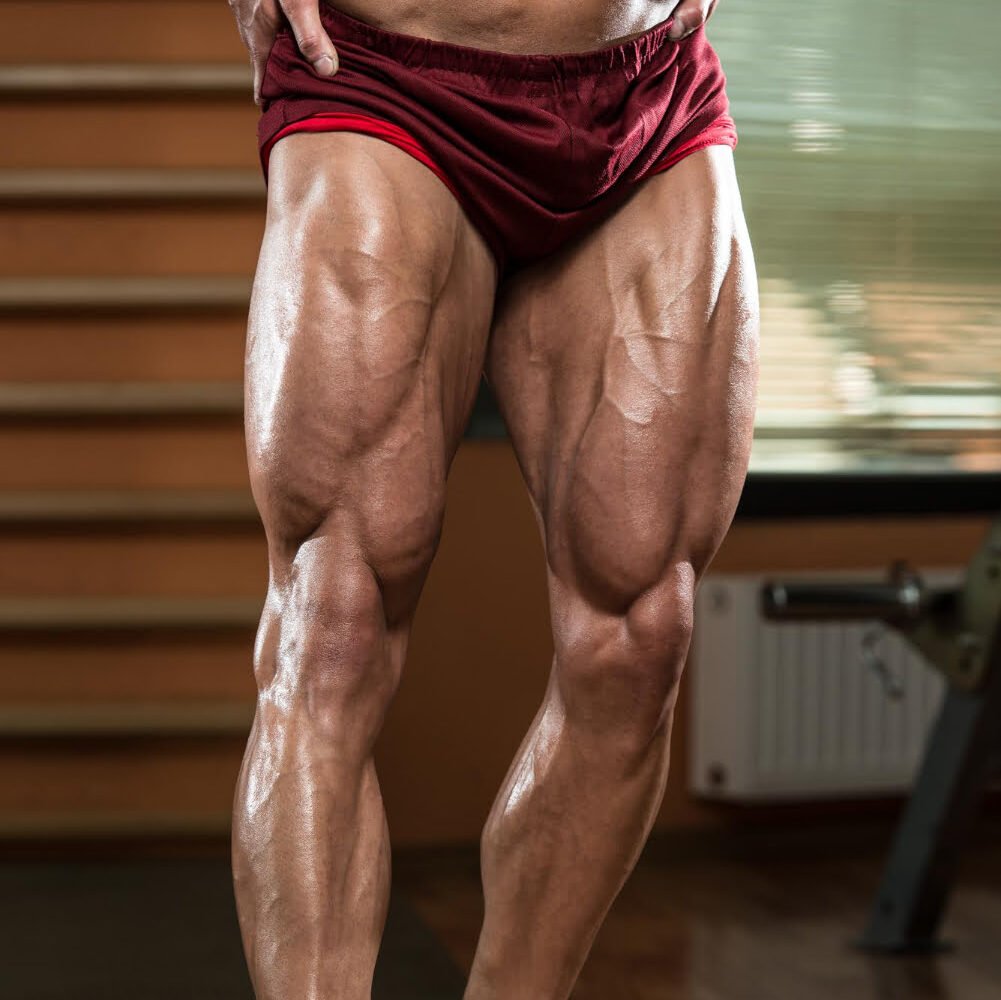
Beginner-friendly workout
A beginner-friendly quad workout offers a gentle introduction to free weight exercises that target the quads. It is essential to gradually build strength and proper form before increasing intensity. Here’s a simple and effective workout routine that beginners can try:
- Dumbbell Cossack Squats: This exercise targets the inner thighs, quads, and glutes. Stand with your feet hip-width apart, holding a dumbbell with both hands at chest height. Take a wide step to one side while bending the knee of the leading leg, keeping the other leg straight. Return to the starting position and repeat on the opposite side.
- Dumbbell Goblet Bulgarian Split Squat: With a dumbbell held close to your chest, stand in front of a bench or elevated surface. Place one foot on the bench behind you and lower your body into a lunge position. Push through the front heel to return to standing and repeat on each leg.
- Dumbbell Wall Sit: Stand against a wall with your legs shoulder-width apart and perform a seated position as if sitting in an invisible chair, while holding dumbbells at your sides for added resistance.
Advanced workout
Take your quad training to the next level with this advanced workout, designed to challenge your lower body strength and endurance.
- Barbell Front Rack Lunge: Start by positioning the barbell on the front of your shoulders as you step forward into a lunge, ensuring that both knees are at 90-degree angles before returning to a standing position.
- Barbell High Bar Squat: With the barbell placed high on your upper back, squat down until your thighs are parallel to the ground and then push through your heels to return to a standing position.
- Barbell Lateral Lunge: Hold the barbell across your upper back and take a wide step to one side, bending that knee while keeping the other leg straight; then return to the starting position and repeat on the opposite side.
- Barbell Olympic Squat: Perform squats using an Olympic barbell, ensuring proper form and depth for maximum muscle engagement.
Conclusion

In conclusion, free weight quad exercises offer a practical and efficient way to sculpt your legs. By incorporating these exercises into your routine, you can enhance muscle definition and strength in your quads while reaping the benefits of improved athletic performance and better knee health.
Embrace these strategies as they hold the potential to significantly impact your lower body strength and overall physical well-being. Consider integrating additional resources or professional guidance for further refinement in your training journey.
Now is the time to take charge of sculpting stronger, firmer legs through targeted free weight quad exercises!
FAQs
1. What are quad exercises good for?
Quad exercises strengthen and sculpt the muscles in your legs, including the rectus femoris, vastus intermedius, and other key muscle groups that support your kneecap (patella).
2. Can I do quad exercises at home with free weights?
Absolutely! You can perform a variety of free weight exercises such as single-leg squats and lunges to target your quads without needing a gym membership.
3. What’s an effective quad exercise using kettlebells?
The sumo deadlift is a powerful strength exercise that utilizes kettlebells to challenge your lower legs, helping to build muscle and improve balance.
4. How does proper form affect squatting exercises?
Maintaining proper form during back squats or deeper squat variations helps prevent injury and ensures you’re targeting the right muscles for maximum hypertrophy—muscle growth.
5. Is it essential to use heavy weights for leg workouts?
No, not always. Exercises like sissy squats focus on isolation and can be just as effective with lighter weights or even bodyweight by emphasizing technique over heaviness.
6. Are calf raises also important for developing strong quads?
While calf raises primarily work the muscles on the back of your lower legs (the antagonists to your quads), they are still crucial for overall leg development and should not be overlooked in a balanced workout routine.

Author
Years ago, the spark of my life’s passion ignited in my mind the moment I stepped into the local gym for the first time. The inaugural bead of perspiration, the initial endeavor, the very first surge of endorphins, and a sense of pride that washed over me post-workout marked the beginning of my deep-seated interest in strength sports, fitness, and sports nutrition. This very curiosity blossomed rapidly into a profound fascination, propelling me to earn a Master’s degree in Physical Education from the Academy of Physical Education in Krakow, followed by a Sports Manager diploma from the Jagiellonian University. My journey of growth led me to gain more specialized qualifications, such as being a certified personal trainer with a focus on sports dietetics, a lifeguard, and an instructor for wellness and corrective gymnastics. Theoretical knowledge paired seamlessly with practical experience, reinforcing my belief that the transformation of individuals under my guidance was also a reflection of my personal growth. This belief holds true even today. Each day, I strive to push the boundaries and explore new realms. These realms gently elevate me to greater heights. The unique combination of passion for my field and the continuous quest for growth fuels my drive to break new ground.

